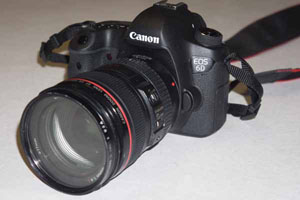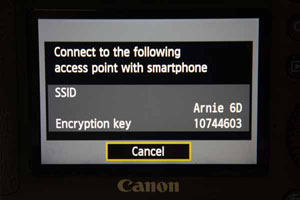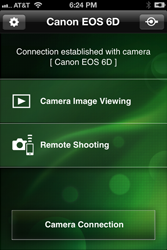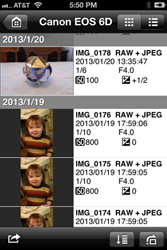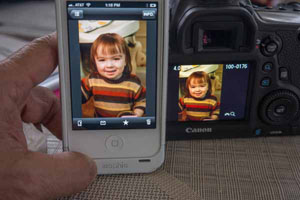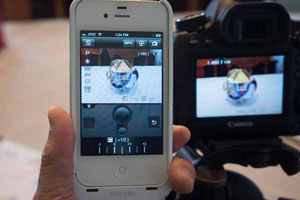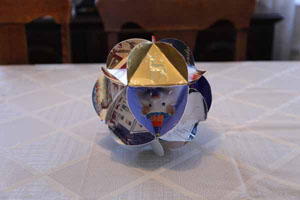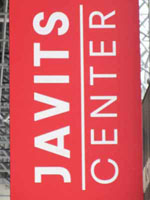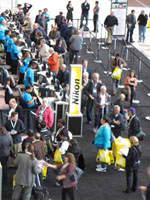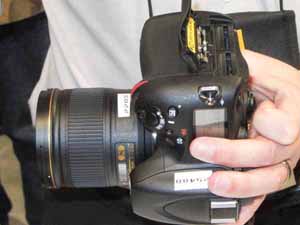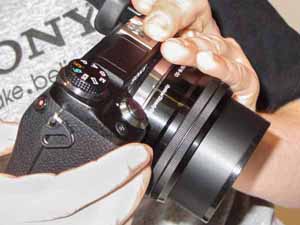Online Magazine
Recent Posts
- Safeguard your Cellphone Photos
- Black & White to Color – Instantly
- Wearing Many Hats
- Video Roundup
- Rescuing Your Blurry Pictures
- Showing Their Age
- What is Your Angle?
- Panorama Photos
- Humorous Photos
- Close Ups
- Fisheye Pictures
- Photo Antiquities
- Printing Big
- Appreciating Scale
- Celebrity Sightings
Tags
More Places to Go
- Free "How-To" Books “How To” books for popular cameras 0
- Vist Us on Facebook keep in touch with us on Facebook 2
Archives
- July 2023 (1)
- March 2023 (2)
- February 2023 (1)
- December 2022 (1)
- October 2022 (1)
- September 2022 (8)
- August 2022 (9)
- July 2022 (1)
- June 2022 (1)
- June 2021 (1)
- May 2021 (1)
- March 2021 (5)
- February 2021 (4)
- January 2021 (2)
- April 2019 (1)
- March 2019 (1)
- February 2019 (1)
- October 2018 (2)
- April 2018 (1)
- March 2018 (4)
- February 2018 (1)
- November 2017 (1)
- August 2017 (1)
- June 2017 (1)
- April 2017 (1)
- March 2017 (5)
- February 2017 (2)
- January 2017 (1)
- October 2016 (1)
- September 2016 (1)
- August 2016 (1)
- July 2016 (1)
- May 2016 (1)
- April 2016 (1)
- March 2016 (2)
- February 2016 (1)
- January 2016 (2)
- December 2015 (1)
- November 2015 (1)
- October 2015 (3)
- April 2015 (1)
- March 2015 (5)
- February 2015 (1)
- January 2015 (4)
- December 2014 (2)
- November 2014 (5)
- October 2014 (2)
- September 2014 (1)
- August 2014 (2)
- July 2014 (1)
- May 2014 (1)
- April 2014 (5)
- March 2014 (5)
- December 2013 (2)
- November 2013 (18)
- October 2013 (1)
- September 2013 (1)
- August 2013 (1)
- July 2013 (1)
- June 2013 (3)
- May 2013 (1)
- April 2013 (2)
- March 2013 (1)
- February 2013 (1)
- January 2013 (1)
- December 2012 (1)
- November 2012 (2)
- October 2012 (2)
- September 2012 (5)
- August 2012 (2)
- July 2012 (1)
- June 2012 (1)
- May 2012 (1)
- April 2012 (4)
- March 2012 (1)
- February 2012 (1)
- January 2012 (3)
- December 2011 (1)
- November 2011 (3)
- October 2011 (1)
- September 2011 (2)
- August 2011 (2)
- June 2011 (3)
- May 2011 (4)
- April 2011 (8)
- March 2011 (8)
- February 2011 (10)
- January 2011 (6)
- December 2010 (11)
- November 2010 (14)
- October 2010 (6)
- September 2010 (12)
- August 2010 (2)
- July 2010 (4)
- June 2010 (3)
- May 2010 (1)
- April 2010 (1)
- March 2010 (2)
- February 2010 (1)
- January 2010 (1)
- December 2009 (1)
- November 2009 (2)
- October 2009 (2)
- September 2009 (1)
- August 2009 (3)
- July 2009 (2)
- June 2009 (1)
- May 2009 (2)
- April 2009 (1)
- March 2009 (2)
- February 2009 (1)
- January 2009 (3)
Going Wireless with the Canon 6D
20th January 2013
Earlier this month I visited several of the photo equipment manufacturers at the annual Consumer Electronics Show. Of course the two majors are Canon and Nikon. And while sales by other camera makers including Sony, Olympus, Pentax and Fuji trail by a large margin, new features continue to arrive rapidly among all new models by all manufacturers. This year, one feature that was common in many models is the addition of wireless functionality.
Since CES, I’ve acquired and tested two of the new DLSRs with wireless capabilities: the Canon 6D and the Nikon D600.
Here’s a quick report on how wireless works with the Canon 6D.
There’s nothing earth shattering with this wireless capability. Yes, you can easily transfer images from the 6D to your smartphone and send them via email to others. And yes, it allows for backup, however the images are reduced to a smaller 1920 x 1280 jpg size.
I’ll cover more soon in another article about the Canon 6D’s wireless capability with a computer.
Also in the works is an article about the Nikon D600’s wireless capability.
Written by Arnie Lee
Photoplus Expo
25th November 2012
for both professionals and consumers
When someone asks me where I’m from, I usually volunteer a two part answer: “I grew up in New York but I live in Michigan”. Still after almost 40 years, it’s a treat for me to return to New York to see friends and family.
For this report, I’ll concentrate on several of the new digital cameras as these are the among the most popular.
Nikon D600
I first saw the Nikon 600 a few weeks ago at the huge Photokina Expo in Cologne, Germany. Nikon’s newest DSLR is positioned as a “prosumer” model. Its full-frame sensor, the same size as a 35mm film frame, offers an impressive 24MP resolution with superior light gathering power and less noise than the more common APS-C size sensors found in many consumer targeted DLSRs.
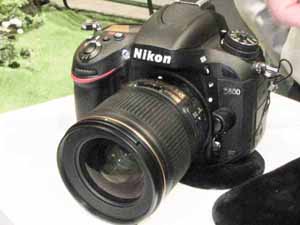 |
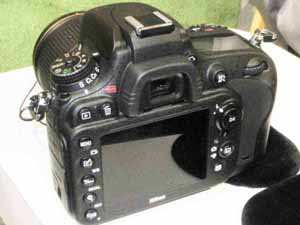 |
Other notable features are:
- built-in flash with versatile wireless control of external units
- dual SD card slots – you can configure the D600 to record duplicate of images on both SD cards or to record jpg images on one card and RAW images on the other
- in-camera HDR capability – multiple exposures are combined automatically to capture a wider range of tones
- Active-D lighting – reduces very contrasty scenes to retain detail in highlights and shadows
- time-lapse – captures multiple frames at specified intervals
- full 1080p HD video at multiple frame rates
- uncompressed video output via HDMI cable
- external stereo input with visual auto level monitor
Users who want to transmit images directly to a smart device can purchase the inexpensive WU-1b wireless adapter. With this they can backup images and/or share images as text messages or online social media sites.
The D600 will prove to be a very capable model for those looking to upgrade from one of Nikon’s DX format cameras to a full-frame body. It’s available now for $2100. The price of the WU-1B wireless transmitter is $60.
Canon 6D
Pick up the Canon 6D, and you’ll immediately notice how much smaller (less wide) and lighter it is compared to Canon’s previous full frame 5DMkII and 5DMkIII models. The target market for the 6D is the prosumer who wants to upgrade from an APS-C frame size body, similar to what Nikon is doing with its D600 model.
Other features of the 6D are:
- 20MB full-frame sensor
- 11-point autofocus system
- high speed capture at 4.5 frames per second
- single SD card slot
- in-camera HDR – combines bracketed exposures to yield images which encompass wide exposure levels
- multiple exposure – superimposes up to nine separate images onto single frame
- full 1080p HD video at multiple frame rates
- built-in WiFi – sends images wirelessly to smart devices (computer,mobile phones) for backup or preview
- built-in GPS – adds location information to images
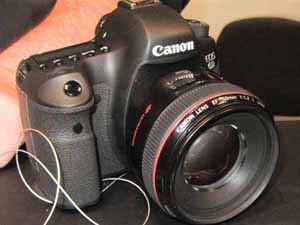 |
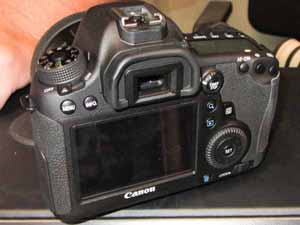 |
One feature missing from the 6D is a built-in flash. Normally, this classifies the camera as a professional model. Originally slated for release December 15th, the Canon 6D was already shipping in late November. The price is $2100, same as the Nikon D600.
Sony NEX-6
I have to admit that I’m a big fan of Sony’s line of mirrorless interchangeable lens cameras (MILC). The newest member of the NEX series is the NEX-6. The MILCs are all much smaller and lighter than any of the DLSRs, making them very convenient to carry.
This model uses a hybrid autofocus system that addresses a shortcoming of the earlier models. Autofocus is now performed by combining fast phase-detection for coarse focusing with contrast-detection for precise focusing.
Many of the controls on the NEX-6 have been reworked from earlier models to change the settings faster and more conveniently. The high resolution electronic viewfinder lets the user preview the effect of the settings before the shutter is released.
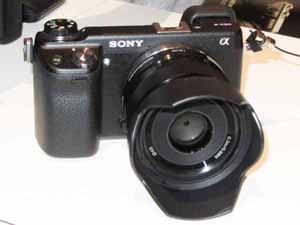 |
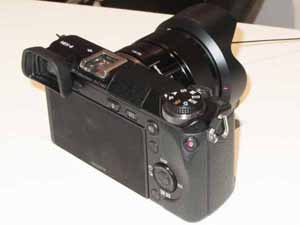 |
The 3″ LCD display has a 920K dot resolution and tilts 90 degrees upward and 45 degrees downward for easy viewing in a variety of shooting situations.
Among the innovative shooting features are:
- in-camera HDR – combines three separate images into a single image with wide tonal range
- adjustable DRO – dynamic range optimizer helps prevent overly contrast images
- multiframe NR – captures multiple frames and combines parts to produce single framewith least amount of moise
- sweep panorama – sweep your camera horizontally to take multiple frames which are stitched together in camera
- built-in flash
- built-in WiFi – sends images to mobile device or computer for backup or display
- full 1080p HD video
The Sony NEX-6 is available now with 16-50mm lens for $1000.
Thanks to the vendors from Nikon, Canon and Sony who provided me with much of the technical information that I’ve presented here.
The show management told me that more than 24,000 visitors attended this year’s Photoplus Expo. Based on my conversations, I recently added a new Canon 6D to my large inventory of photo equipment. I’m sure that I wasn’t the only one to have made a purchasing decision after the show.
Written by: Arnie Lee
Parade of Cameras 2
05th October 2012
Photokina Part 2 – the new stuff
Photokina is the largest photographic trade show and takes place every two years in Cologne, Germany. Photokina is a major venue where photographic manufacturers showcase their upcoming products. Here’s a short report about some of the new products that caught my attention during my short visit in late September.
 |
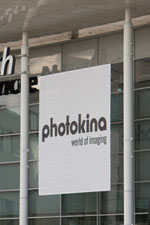 |
Walking the aisles, I observed two opposing trends taking place among the photographic equipment makers.
On one side, there’s a movement towards larger sensors. Advanced and professional photographers have typically chosen equipment that produces the highest quality images regardless of size and weight. Equipment with larger, full-frame sensors have dominated this category. In Part 1 of this article, I described several of the new full-frame cameras that I demo’d at Photokina.
On the other side, there’s is a flood of activity devoted to making smaller, higher quality cameras.
(more…)
